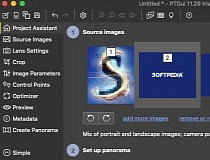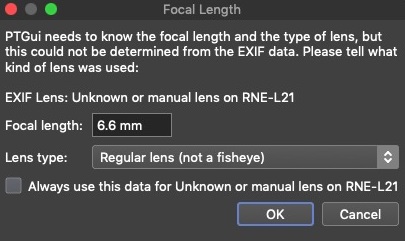

DSLR and mirrorless cameras typically have larger sensors, and feature a wider dynamic range than compact cameras with smaller sensors.
#Ptgui pro rotation image full#
Watch this video tutorial by Florian Knorn for a full walkthrough.ĭynamic range is a photography term, referring to the range of light intensities from the darkest shadows to the brightest highlights in images.

Now if you check on the seam again, you will notice that it has already moved.

Now you are able to find the source image where that hidden object from the panorama is on paint and fill that in green using the same two tools explained above. Want to make an object that’s currently hidden visible again because it’s cut into two by a stitch seam, you need to bring out the Detail Viewer and choose to “Show Seams”. Want to block out the tripod, you need to paint it red, which you can encircle with the Draw tool and fill your enclosed object with red using the Fill tool With PTGui, you can paint the objects you want to mask out in red or green, but notice that red is for hiding objects from your final panorama, while green is for preserving objects so they come out visible in your output. This technique is used to fix blending errors. Masking is frequently resorted to when there are moving objects in your panoramic images that result in doubles, or when you don’t want to see your tripod showing on the nadir image. That way, by having your 360 camera swiveling on a fixed point, you have ensured that the perspective remains the same, and saved yourself the headache of having stitching errors. This technique is also explained by its inventor, Philippe Hurbain on his personal website. If you don’t have a panohead, you can also craft a philopod, which is a piece of string tying the no-parallax point of your camera at one end with a weight at the other end. To solve that problem, you need to attach a panoramic head, panoheadfor short, onto your tripod, to help rotate your camera around the front of the lens. Now suppose if you mount your camera on a tripod and start turning it on its base, the lens/perspective is constantly changing as you take images for your panorama. The viewpoint for your camera lens is its entrance pupil, also known as no-parallax point or nodal point. To avoid having stitching errors, we recommend that you avoid having parallax at all costs that is also to say, ALL of your images to be stitched into a panorama must be shot from ONE single viewpoint. Parallax is a phenomenon where two objects in your source images appear to have changed their relative positions from one to another, because of changes in the camera’s perspective.


 0 kommentar(er)
0 kommentar(er)
